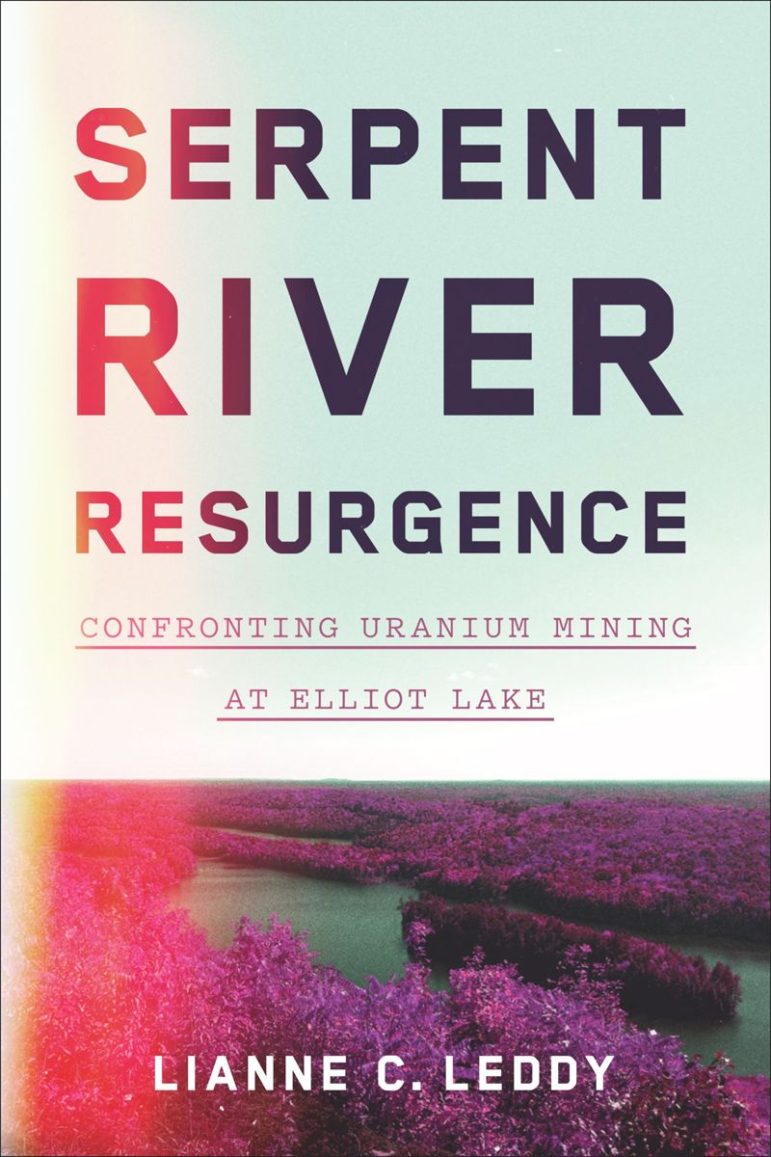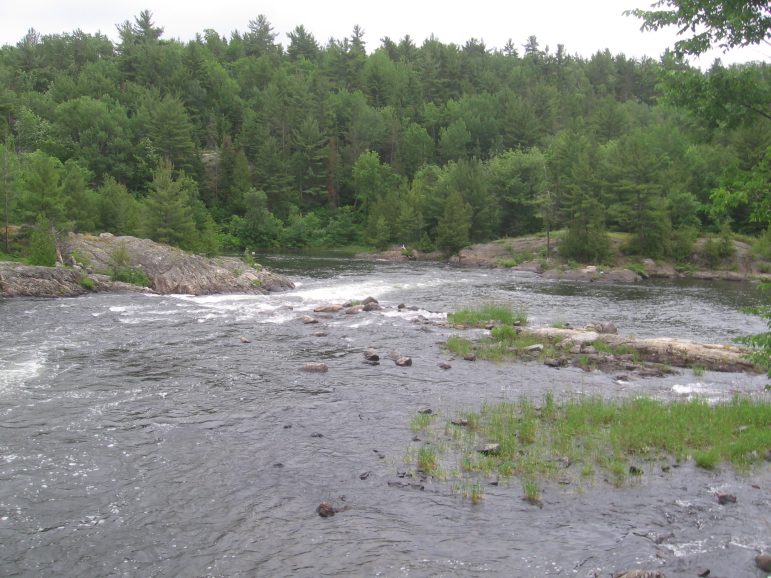
The cover of Serpent River Resurgence, a new book about an old environmental threat, by Lianne Leddy. Image: Will Brown
By Daniel Schoenherr
Lianne Leddy grew up with stories of the uranium mining that poisoned her Anishinaabek community in Ontario.
Now, she’s retelling these stories through Serpent River Resurgence, her new book based on documents and interviews from family and friends who lived through the environmental crisis.
“We were building on conversations that I had been hearing since I was a kid,” Leddy said.
Leddy was raised in the Serpent River First Nation in Elliot Lake, Ontario, east of Sault Ste. Marie. In the 1950s, uranium extraction began at Elliot Lake to capitalize on its high demand from the U.S. during the Cold War.
The mining produced toxic waste which was disposed of in the Serpent River. It flowed downstream to the reserve where it contaminated plants and animals
Leddy found documentation of advisories warning people not to eat the local game and evidence that the local government was aware of the land’s poisoning.
A key component of the uranium mining operation was the Cutler Acid Plant, which produced most of the pollution.
Sulfuric acid is used in uranium mining for leaching, a process where a hole is drilled into the ore and the acid is pumped in, dissolving the ore. The acid is then pumped back out, and separated from the uranium. The process is efficient, but produces toxic gases that workers can inhale if proper protection isn’t used.

The Serpent River in Ontario flows about 10 miles from Serpent Lake into Lake Huron and is named for its narrowness. Image: Lianne Leddy
The acid plant closed in the early 1960s and stood for another 20 years before cleanup began and while Serpent River leaders fought to prevent the mine from expanding.
“A lot of it [was] simply abandoned and left there in the middle of the community,” Leddy said.
She knew many witnesses of the uranium mine’s pollution, including her father and grandmother, she said. Her father worked long hours in the mine and under poor conditions.
Stories Leddy heard while researching the book included those of children playing in the water and coming out with skin rashes and irritated eyes. Malfunctions in the acid plant resulted in miners breathing toxic gas.
The most moving interview for Leddy came from her late grandmother, Gertrude Lewis, who witnessed the impact of uranium mining on her friends.
A passage from Snake River Resurgence reads: “(Gertrude’s) primary goal for the community was to, ‘Get the acid plant cleaned up really well! And not to have to worry about it in another 20 or 30 years. I won’t be around. At least the young people should have someplace to call home.’”
“The way that…she…(weaved) humor into a really devastating story was great,” Leddy said, her voice cracking between words.

Lianne Leddy is an Anishinaabek author and associate professor at Carleton University in Ontario, Canada. (Courtesy of Lianne Leddy)
According to the book, Lewis would joke about dust from the mine turning white clothes brown when hanging them out to dry and members of the community swimming in the supposedly “cleaner” water of the Serpent River that was contaminated with radium.
The uranium industry harmed hundreds of people in the area. Another passage tells of a worker who was confirmed to have gotten lung cancer from the mine.
The book also details more problems facing miners, including facial burns and persistent coughing and gagging after work days.
Telling the story of her community’s struggle could help others avoid the same mistakes, she said.
“A lot of this story can be a cautionary tale for what happens when…we open up these territories for (mining),” Leddy said.
An area of Canada facing similar problems today is the Ring of Fire region, located in northern Ontario. Named after a Johnny Cash song with the same name, the area is rich in valuable minerals and is the subject of extensive political debate.
Proposed mining operations across Canada could cause the same problems as in Elliot Lake, Leddy said.
“This is one of the reasons why I thought (my) project deserved to be turned into a book…was to talk about these issues,” she said.
The uranium mine and the Cutler Acid Plant were cleaned up in 1988, a $5.4 million project. Compensation has yet to be given to the Serpent River First Nation for the continued contamination, Leddy said.
Serpent River Resurgence is published by the University of Toronto Press and is available on Amazon for $29.95.